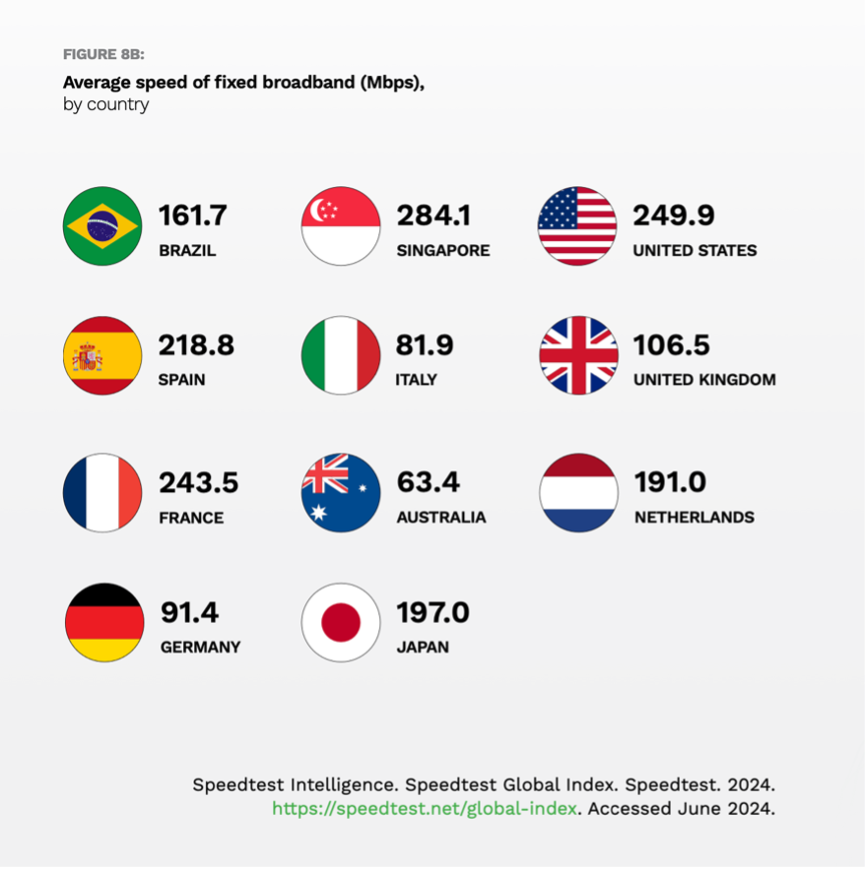
Although France checks in seventh — the first country below the median — in the recently released landmark report by PYMNTS Intelligence, “How the World Does Digital,” its Gen Z segment made a bold statement.
French Gen Z users are the most active, with 464.8 activity days per month and about 15.5 activities per day — the highest engagement by Gen Z in any country, our report found.
While France is one of Europe’s most advanced digital economies and the second-largest economy in the European Union (EU) based on GDP, the report shows moderate overall engagement outside of Gen Z users. Most people have access to high-speed internet and mobile networks. Daily activities in France heavily involve digital technology, with social media and video streaming being the most popular. Younger generations and higher income earners tend to be more digitally engaged.

The PYMNTS Intelligence 2024 report, “How the World Does Digital,” analyzes digital engagement among 67,000 consumers across 11 countries in 2023. It reveals high participation rates with varying levels of engagement based on generation and income. Key findings highlight Brazil’s leadership in digital adoption and emphasize the urgent need for global inclusive digital growth and infrastructure to bridge the digital divide.
The countries surveyed include the United States, the United Kingdom, France, Germany, Italy, the Netherlands, Spain, Australia, Japan, Singapore and Brazil. The sample sizes were statistically representative of the population in each country, considering gender, age, income and education.
To measure digital engagement, the report identified 40 core activities within 11 pillars of digital life, such as banking, shopping and entertainment. Respondents indicated their engagement frequency for these activities (daily, weekly, monthly or not at all). The results were then extrapolated to estimate the number of days consumers engaged in each activity per month. This allowed for a comprehensive comparison across different demographics and countries.
With a population of 68 million in 2022 and ranked 39th in per capita GDP, most (about 87.3%) French residents had access to high-speed broadband in 2022 and nearly all had access to at least 4G cellular networks by 2022 — 45% had access to 5G. Most adults had smartphones and, in 2021, 86.3% of adults had debit cards.

Like other countries, the report found France’s digital engagement covers various activities.
Video streaming heads the list, with 52.3% of consumers engaging in it at least weekly. Social media (passive) trails closely, with 51.9% participation, and mobile gaming is third at 49.4%. Other popular activities include messaging (47.9%), mobile banking (43.4%) and watching a livestream (42.0%). Additionally, a significant portion of consumers engage in music streaming (40.6%), online banking (38.4%) and using a traffic-related app (37.8%).
France’s top five activities based on number of days consumers engage in them monthly are passive social media (13.3), video streaming (13.2), mobile gaming (13.1), messaging (12.1) and mobile banking (11.0).
Gen Z users, by far, are the most digitally active, checking in at 464.8 activity days per month and about 15.5 activities per day. Millennials are next at 378.4 followed by a considerable drop-off to Gen X at 256.1 and baby boomers at 150.0.
High-income earners lead with 275.5 activity days, compared to 272.6 for middle-income, and 267.6 for low-income earners.
French officials are working to enhance their digital transformation standing in Europe. To achieve the European Union’s ambitious 2030 digital transformation goals, France has unveiled a comprehensive strategy, which prioritizes several key areas: Bolstering digital infrastructure, shoring up cybersecurity, and training the workforce in digital literacy.
Additionally, it aims to spark innovation in cutting-edge technologies like artificial intelligence, while simultaneously improving the accessibility and user experience of digital public services. This multi-pronged approach underscores France’s commitment to not only economic growth and sustainability, but also achieving technological leadership and ensuring that everyone benefits from the digital revolution.
France is making big improvements in its digital capabilities, bringing fast internet to more rural areas and making sure their digital systems are safe from cyber threats. It’s also teaching more people how to use digital tools effectively, which helps everyone get involved. France is moving forward with innovative ideas in artificial intelligence (AI) and other technologies, using them to make things better in different industries and boost the economy.
A pivotal event occurred at the Choose France 2024 Summit: Microsoft announced a massive investment in France (4 billion euros) to boost the country’s digital skills and AI development. Microsoft plans to train 1 million people and support 2,500 startups by 2027, which will help create jobs, grow the French economy and make France a leader in AI technology.
Microsoft Vice Chair and President Brad Smith said the investment shows a commitment to supporting and growing digital innovation and economic growth in France, adding: “We are building state-of-the-art Cloud and AI infrastructure, training people with AI skills, and supporting French startups as they use our technology with confidence to grow in a fair and responsible way.”